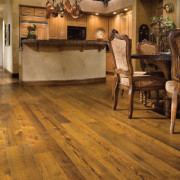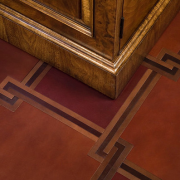Refinishing Hardwood Floors: DIY or Professional Help?
The great things about hardwood floors: they’re pleasing to the eye and very durable, meaning that if they start getting worn out, they probably don’t need to be replaced. All you need to do is refinish them in order to make them “pop” once more.
Now, we say “all you need to do”, but that should be taken with a word of caution. While it is possible to refinish your floors by yourself, experience is key here. A professional will know how to handle the process from start to finish, whereas someone who is inexperienced may skip some steps or do them improperly. A poor refinish can devalue your home rather than improve it!
A pro can take anywhere from two to five days to complete the task, adding time for complex jobs or poor weather that interferes with drying times. They will typically do one of two things: 1) they will rebuff the finish, or 2) they will sand and finish the floor. The downside to hiring a professional is, of course, the cost. Either of these two jobs can cost you anywhere between $1 and $4 per square foot of floor that needs to be done.
If you don’t want to shell out the money for a pro and you are supremely confident in your DIY ability, here’s what you can do to save some cash.
First of all, make sure you’ve purchased some high-quality dust masks or respirators. You will also need eye and ear protection (this process is messy and loud!). You can seal off doors and other rooms with plastic sheeting to prevent dust from escaping to other parts of the home.
If you’re going to buff the floor, you will need to rent a buffer and purchase about a gallon of floor finish. Make sure you test the buffer and the finish before committing to doing the whole area! Find a small, inconspicuous spot, buff out the old finish, then apply the new one. If it sticks, you’re in good shape.
If your intention is to sand and refinish the floor yourself, you’ll need to rent a drum sander and buy sandpaper, wood filler, and floor finish. We do not recommend using a drum sander unless you know what you’re doing with it, due to its tendency to gouge the floor if left in one spot for too long. Use progressively smaller grains of sandpaper as you go to get a nice, smooth surface.
Be smart about this process! We can’t emphasize enough that this is a job for somebody that at least has experience, if not formal job training. If you aren’t certain of your own ability, it is a lot cheaper to hire a pro than it is to have to redo everything after a mistake. Good luck!






